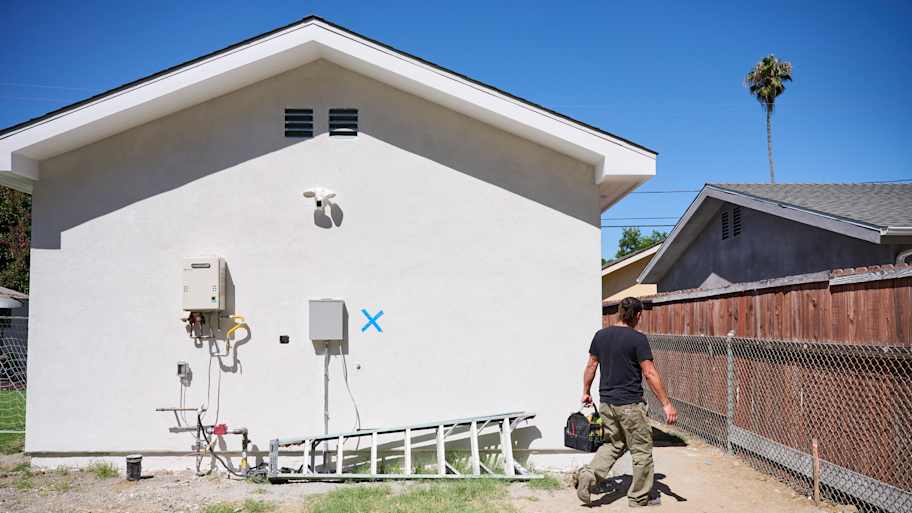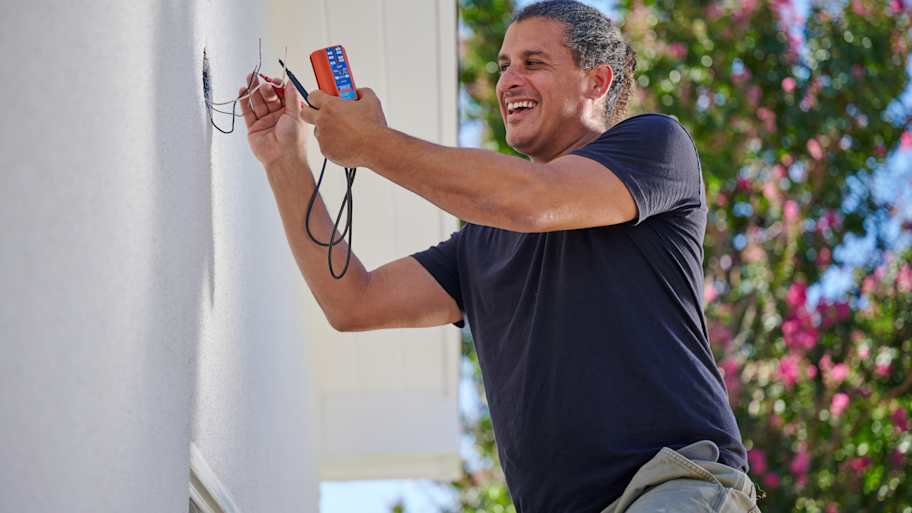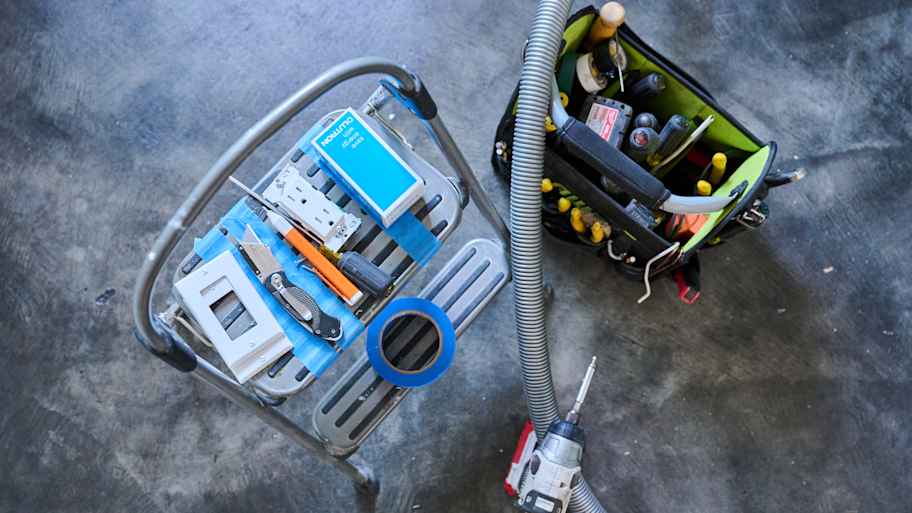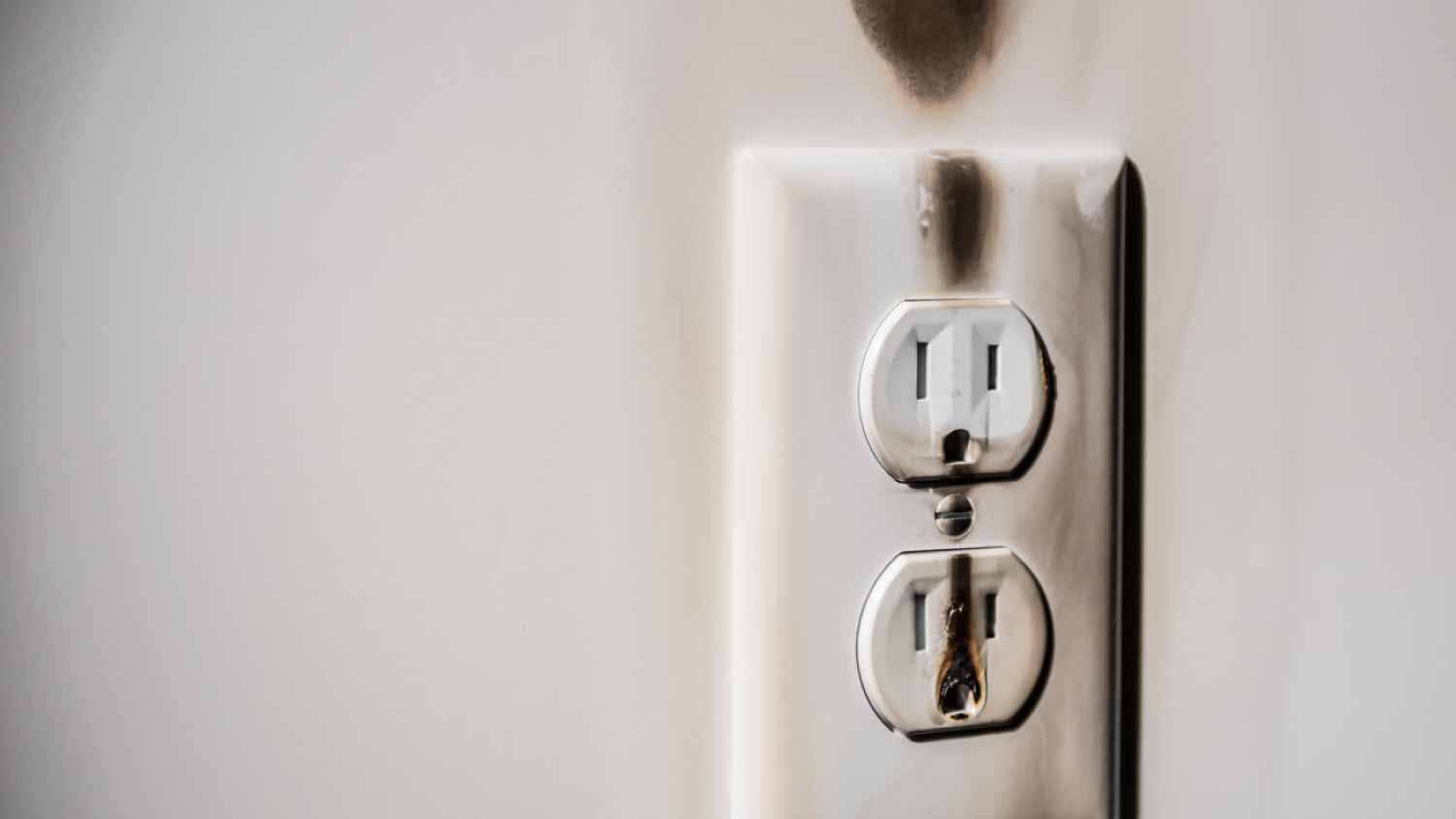Should You Invest in Surge Protection For Your Home?
Small investment, big returns


Power surges are unpredictable and have many possible causes.
Replacing electronics or appliances costs thousands of dollars.
Installing plug-in power surge protectors costs $10 to $160.
Installing whole-home power surge protectors costs $70 to $3,000.
Power surges are usually unpredictable and can ruin your electronics and appliances—especially if you’re unprepared. But protection comes at a cost. Is surge protection worth it? A random lightning strike or power outage can cause a surge, putting your beloved gadgets and appliances plugged into outlets at risk. (Let’s be honest; when are your gadgets not plugged in?).
If the idea of going without worries you, consider implementing surge protection for your house.
Surge Protectors Redirect Dangerous Energy Spikes
Your electronics and appliances can only handle a certain amount of electricity, usually 120 to 169 volts. If more electricity moves through your wiring, it causes a power surge. Though most surges last only a few nanoseconds, such high voltage can damage your electronics.
A surge protector ensures that any extra electricity over the usual threshold does not pass through and, instead, redirects electricity spikes to the grounding wire. So is surge protection necessary? Most electricians and homeowners would say yes if you want to avoid potential damage to your electronics or appliances.
Unexpected Sources of Power Surges
Lighting strikes are the most common known cause of surges—and arguably one of the most damaging. If lightning hits your power line or transformer, the surge could be thousands of volts over the recommended threshold.
Besides lightning, there are other unpredictable sources of surges. These include power outages, power company malfunctions, improperly working equipment from the utility company, and downed power lines.
According to the National Electrical Manufacturers Association, around 60% to 80% of surges are triggered by things happening inside your home, such as an overloaded circuit breaker or old wiring that constantly trip or fry your breaker.
This means many of your electronics are at risk of damage if your home is not protected from expected (and unexpected) power surges. If you have any of these items below, you may want to consider surge protection solutions for your house.
The Price of Damage: Is Surge Protection Necessary?
Power surge damage is hardly a minor inconvenience—especially when considering the price of your TVs, laptops, and other home systems. Power surges can also affect appliances like microwaves and dishwashers.
And not all surges are as dramatic as a lightning strike or a power outage. Small surges that happen periodically in your home can decrease the longevity of your expensive electronics. In rare cases, power surges can spark electrical fires.
At minimum, you’ll need to replace any electronics or appliances that no longer work. These are the average costs of common household items:
| Household Item | Average Price |
|---|---|
| Smart TV | $400 – $500 |
| Laptop | $300 – $3,000 |
| Home theater system | $2,000 – $63,000 |
| Washer and dryer | $450 – $3,800 |
| Fridge | $1,000 – $2,000 |
| Smart home automation | $170 – $1,400 |
In the rare, unfortunate event that the power surge leads to an electrical fire, you can expect to pay $4.70 per square foot in fire restoration costs. (These figures don’t account for the cost to replace your material possessions.)
As a result, many homeowners think acquiring surge protection for their house is worth it when considering the alternatives. Let’s take a look at the cost of a few common surge protectors below.
Plug-In Power Surge Protector Costs

There are many power surge protectors to fit all of your needs. You can opt for a basic plug-in protector with a single outlet, or go with a rack-mount protector for your most expensive electronics.
| Power Surge Protector Type | Cost |
|---|---|
| Basic plug-in protector (with one or two outlets) | $10 |
| Power strips with surge protectors | $10 – $40 |
| Plug-in protectors for heavy appliances | $10 |
| Rack-mount surge protectors | $70 – $160 |
Whole-Home Power Surge Protector Costs
A whole-home protector works by rerouting surges to the grounding wire, so they don’t reach your outlets and keep your electronics safe. The cost to install a whole home surge protector ranges between $70 to $700. You can opt for additional protection by installing an external surge protector on your utility pole. A surge protector on the electrical panel diverts excess electricity before it can reach your house. These cost $300 to $1,000.
And while your electrician is at your property, paying for an electrical inspection to make sure everything looks good. That costs $100 to $400, according to HomeAdvisor.
Is Surge Protection Worth It?
Once you consider the facts about surge protection, it’s easy to see how important they are. The cost of potentially replacing your expensive electronics far surpasses the costs of installing protectors in your house.
For peace of mind and your safety, it makes sense to use plug-in protectors at the minimum. If it’s in your budget, installing a whole-home protector is a sound investment.





- Home Generator Repair
- Lamp Repair
- Electric Repair
- Generator Installation
- TV Antenna Services
- Emergency Electricians
- Commercial Electricians
- Attic Fan Installation
- Attic Fan Repair
- Exhaust Fan Installation
- Electric Inspectors
- Subcontractors
- Electrical Construction
- EV Charger Installer
- Chandelier Installation
- Doorbell Installation
- Bathroom Fan Installation
- Ring Installers
- Electrical Panel Upgrade










